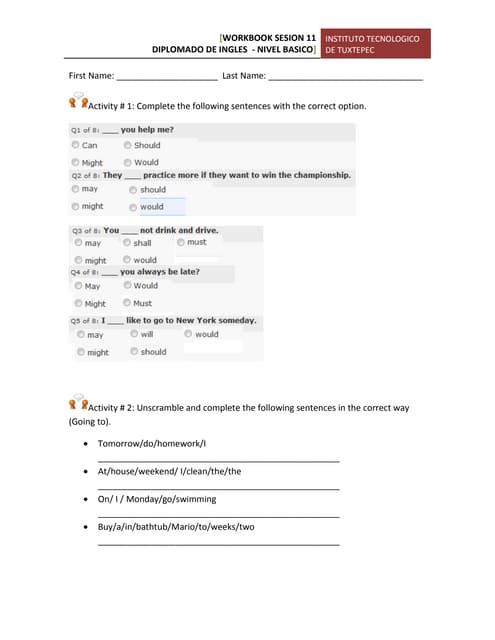
There are many molecular visualization programs which permit the user to import CIFs, display atoms, and select atom pairs to generate bond lengths, atom triplets to generate bond angles and even sequential atom quadruplets to generate bond torsions. However, the CIF generally provides only the basic information, and the molecular metrics of bond lengths, bond angles and torsion angles around bonds may still need to be generated.
#Jmol workbook exercise 11 free
These files are freely available (Glasser, 2016 ) and large collections have been made into databases, which may be free or commercial, such as the Cambridge Crystallographic Database (CSD, for organic materials – now exceeding one million entries Groom et al., 2016 ), the Inorganic Crystal Structure Database (Zagorac et al., 2019 ), the free Crystallography Open Database (Gražulis et al., 2009 ), the free American Mineralogist Crystal Structure Database (Downs & Hall-Wallace, 2003 ), the free RCSB Protein Data Bank (PDB Berman et al., 2000 ) and so forth (Glasser, 2016 ). These data are made widely available by publication both in the primary literature and, since the 1990s, via deposition as crystallographic information files (Hall et al., 1991 ) ( *.cif), which the major crystallographic journals currently require the CIFs are subject to extensive checks ( ) in order to ensure their integrity. The fundamental data of crystallography, that is, chemical composition, unit-cell dimensions, space-group symmetry and fractional atom coordinates, are reported as the results of the diffraction experiments.
#Jmol workbook exercise 11 full
Even for students who have the opportunity to perform a full X-ray structure determination (Kantardjieff, 2010 Chapuis, 2011 Aldeborgh et al., 2014 Gražulis et al., 2015 ), it appears that the structural details are obtained from the computational software, without students having the opportunity of acquainting themselves with the calculation methods. The difficulties of these calculations are compounded by the fact that the experimental results are generally presented in crystal spaces, which best represent the crystalline symmetry but which are not readily manipulated by those only familiar with everyday orthogonal Euclidean space described using Cartesian coordinates. However, the methods of calculation which yield these values are less familiar, often hidden in crystallographic computational programs, and not generally accessible to the non-expert. They are also familiar with the source of these data, which generally arise from diffraction experiments, principally with X-ray sources but also with electron or neutron sources. Students and teachers of chemistry are familiar with the lengths of and angles between chemical bonds, and even with torsion angles defining molecular conformations. This contribution provides a significant practical application which can also act as motivation for the study of matrix mathematics with respect to its many uses in chemistry. The methods in use are illustrated by a detailed example of the calculations. In particular, their general formulation as metric matrices is introduced. They are also available in matrix formulations, which are readily manipulated and calculated using the matrix functions of Excel. In their simplest computational form, they are applied as algebraic expansions which are summed. The methods described apply to both fractional coordinates in crystal space and Cartesian coordinates in Euclidean space (space in which the geometric postulates of Euclid are valid) and are vector/matrix based.

In this paper, the computational methods are described in detail, and live Excel implementations, which permit readers to readily perform the calculations for their own molecular systems, are provided.



However, the methods used to calculate these values are less well known. Values of molecular bond lengths, bond angles and (less frequently) bond torsion angles are readily available from databases, from crystallographic software, and/or from interactive molecular and crystal visualization programs such as Jmol.


 0 kommentar(er)
0 kommentar(er)
